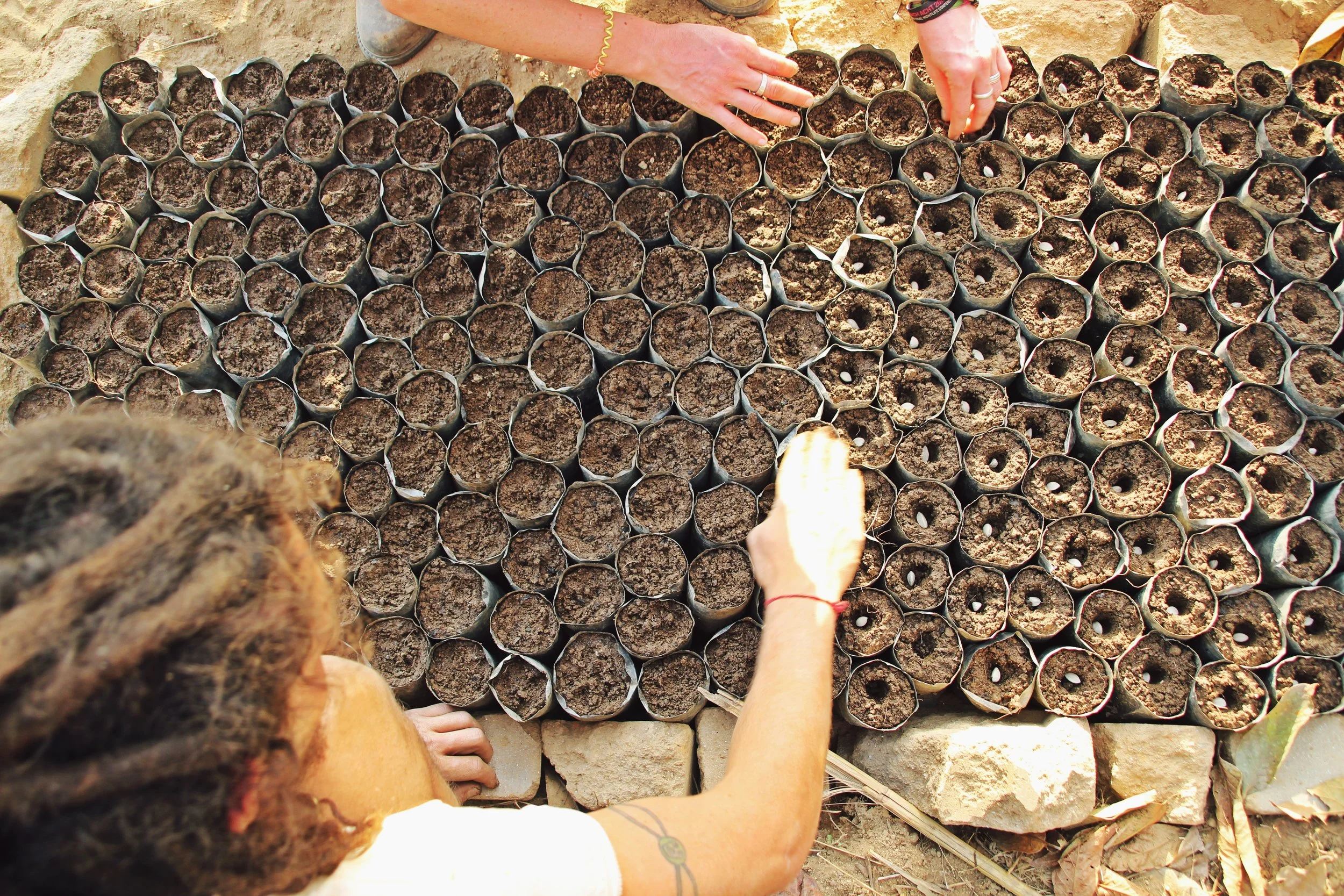The Agriculture team here on the ground has some truly exciting updates! With the completion of our newest bamboo greenhouse, we were able to plant about 4,000 Moringa seedlings, of two distinct varieties. Moringa Oleifera is native to foothills of the Himalayas, exactly where we are currently located. The second variety, Moringa Stenopelata, grows at high altitudes in Ethiopia and Kenya, which is also fairly similar to Takure's altitude. Moringa is a tenacious and fast-growing tree, that can grow 2-3 meters in less than a year. It can be grown alongside to provide shade if grown in a sunnier area, or by itself in the clear sun. The Ag team plans to distribute these trees shortly before the monsoon season and hopes to have them established before the heavy rains fully arrive.
Volunteers planting 4,000 trees!
Some of the many reasons we've decided to grow Moringa here in Nepal:
- It's deep taproot won't have to compete with other vegetable and field crops for ground nutrients.
- It is drought tolerant and will do well during Nepal's 9-10 month dry season.
- The leave can be ground into a fine powder which has a high market value. Their long bean pods that can also be sold for 50 rupees/kg at market.
- It can help alleviate malnutrition because it is high in Vitamin A, C, calcium, potassium, phosphorous, iron, and is a complete protein.
- It's nutrient-dense leaves increase milk production in cows.
Moringa Stenopelata seeds
Moringa Oleifera seeds
Providing a space for experimental growing is one of the biggest advantages that the CI Ag team can provide for the local community, an opportunity to see if a lucrative crop like Moringa can grow in this exact terrain and altitude. More importantly, it supports our initiative to reforest this area, reinvigorating the surrounded environment, preventing terrace erosion and circumventing the danger of landslides in the future.
Week old Moringa trees beginning to sprout






